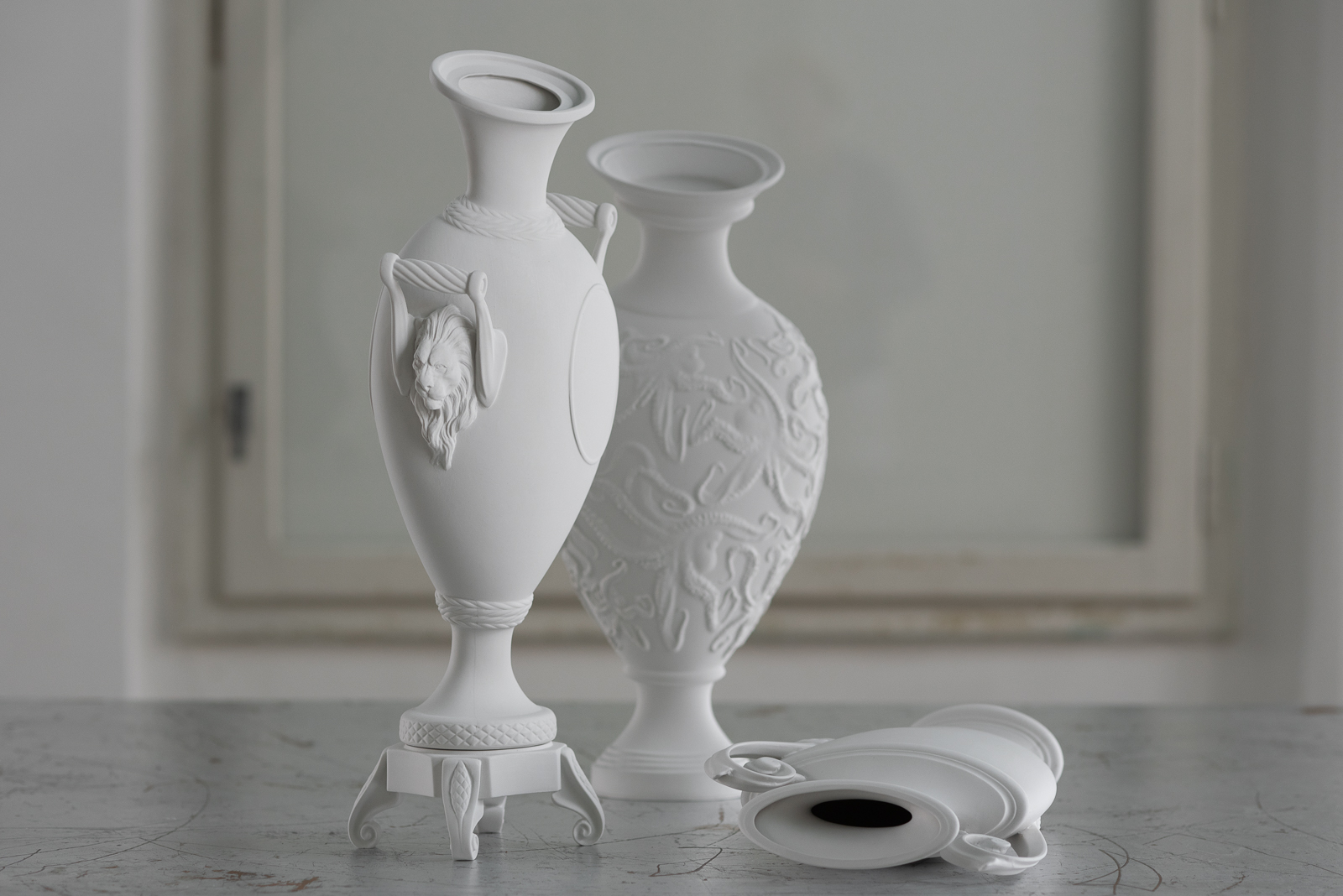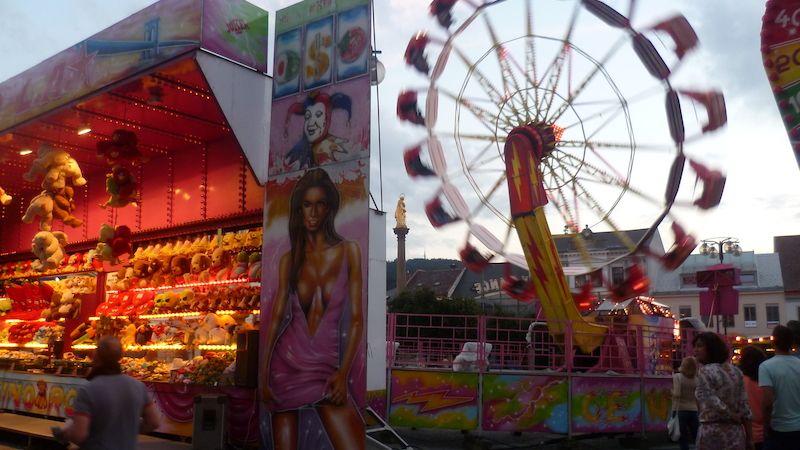MIKULOV – The Borzoj vase by designer Mikulov Daniel Piršč was among the finalists for the Czech Grand Design award in the Designer of the Year category. The internationally awarded author has been running his porcelain factory in Mikulov since 2005 and under the brand name Studio Pirsc Porcelain produces fine porcelain products not only for dining, but also for interior decoration. We visited Daniel Piršč in person in his studio at the At the Wild Man house.
You studied ceramics in high school and college, what or who made you fall in love with porcelain?
She is Jiří Kožíšek’s older classmate at UMPRUM. He did such amazing things that I was completely blown away. Porcelain is delicate and brittle, you have to treat it more sensitively than classic ceramic clay. I was fascinated by the technology of mold making and the fact that porcelain is very sensitive to any intervention. I’ve been driving it ever since and I’m hooked.
What are the possibilities or, conversely, the limitations of porcelain? What will you do and what won’t you do?
It is limited, for example, by product size. Porcelain behaves in a furnace in such a way that at a certain temperature the mass becomes like butter, there is a risk of deformation of the shape. Of course, casting into molds is also limiting. Porcelain can also be modeled, which is called “snake carving”. This is of course possible, but then it has form consequences, products are often deformed. Every manual intervention is visible there. It is said that porcelain has memory, so if you, for example, carelessly remove the teapot spout from the mold and accidentally bend it, you will get its shape back, but the teapot will re-bend in the kiln. In essence, anything can always be done, depending on how much energy one is willing to devote to it.
Your 3D wallpapers, fine china objects in a variety of shapes and colors, which you can variably fold into your own shape, have spanned the globe. What interiors do customers usually choose for? Did you name any of your preferred architectural realizations?
The first shape I designed was the Droplet, an amorphous mercury-like object. It was an order for a restaurant in Bratislava, standing on the water, I attributed it to the drip. Thanks to this realization, I realized what 3D wallpapers really mean and what potential these products have. Wallpaper caught the public’s attention, and I started creating new shapes. This is a very varied product, where the customer or the architect himself creates his own pattern and wallpaper with his own density and composition.
Personally, I really like its implementation in the Entrée restaurant in Olomouc, the 3D wallpapers there have a very strong effect.
Let’s stop now with your new product, the Borzoi vase range. From the looks of it, it was an unprecedented, flat shape and shock. In short, the vase is eye-catching. What is your starting point when designing shapes?
The name Borzoi is related to the breed of dog. It is such an association, the Borzoi is flattened from the front and looks like an ordinary dog from the side. But I admit it occurred to me ex post, the suggestion didn’t come from the shape of a dog. This is a series of three vases, each of which I have named – Amfo, Octopus and Lion.
The idea for this shape came during lockdown, when suddenly my head started working a little differently and I started creating weird stuff like that. If someone asked me how I made it, I couldn’t satisfactorily explain it. In it you can find the theme of how a person sees the world. Not everything you see is true.
We find certain historical elements in the morphology of the vases. Why?
It was intentional. Imagine if it had say a very modern form, something very stylized and distorted this way. The intent of the optical illusion would not be read on that. That’s why I chose an archetype object to make things clear to you. I also see it as a tribute to a beautiful, classic vase.
Why did you leave the Borzoi vase white? For example, 3D wallpaper, on the other hand, glows a variety of colors when treated with metallization.
It has to do with light and shape distortion. The vase is not glazed on the outside, but is polished. This allows sharp shadows, sharp details. White only shows this, gives it a certain uniformity, there is only a play of illusions and shadows. If I put anything else in there it would be extra, no need.
What happened after you said you wanted to make a vase like this? I mean from a technology point of view. The vase is quite narrow, how do you manage to keep it from tipping over? Are you experimenting or do you already have a clear idea?
Of course, a certain experience plays into the production. The optics of the vase are odd, but note that the pedestal on which the vase stands is not so deformed. Base is important. However, a person does not immediately notice this and is afraid that he will stumble himself, that he will fall, but this is not so.
When she was looking up photos of Borzoi vases before our interview, I noticed that most of them were flowerless. Does a similar design vase have a separate object and fulfill an aesthetic function, or is it usually used as a flower vase?
Of course, the vase is functional, it depends on everyone. With a bouquet, there is an odd position, as a vase is two-dimensional thanks to the alignment, whereas a typical bouquet is three-dimensional. A round bouquet doesn’t quite fit in a Borzoi vase.
When we were displaying vases at Designblok, it was hilarious to see visitors passing by and suddenly stopping. How their head calculates what exactly it is. Some say that it makes them dizzy, the brain accepts some information, but can’t directly place it in a real 3D world. It was suddenly too much for him. The diners stared and didn’t know what to do until they understood what it was all about. It was really fun, I enjoyed it.
Vases are made by pouring porcelain mass into plaster molds. Casting the Borzoi series yourself? This is a product of your author, which I think you really care about.
Yes myself. I’d like to pass it on to someone, but it’s not possible yet. With a Borzoi vase, the distortion of the shape is smoother. It is necessary to proceed with experience and be very careful. In this case, I can only rely on myself.
You have been based in Mikulov since 2005, why here? Are you looking for something directly in Mikulov or did you come here?
I got it more or less by accident on a signal from my friends, who know that this object is free. I have settled in Mikulov, I have left Prague. It’s much quieter here for me.
What can we find in the building we are in?
The house was formerly a traveling inn called U daíčeho muše, located on the Brno-Vienna route. This was originally a Baroque building, but has been rebuilt several times over the years. Before I moved here, there was an apprentice, chef-waiter major.
In summer, we have exhibitions here at the gallery, the gallery space is also part of the Křehký Mikulov show. In the summer we have charity concerts here, we welcome musicians like JAR, Jana Kirschner…
What was the last thing that attracted you so much that you thought you’d be inspired by it? Books, movies, or maybe objects or natural phenomena? Something you have completely stopped and want to pay more attention to.
Time.
Time?
Time, yes. That theme also comes with age. Time is a terrible phenomenon, something I’m working on right now that fascinates me. This has something to do with the real life fiction we are talking about with the Borzoi vase. Observing time opened another path for me.
For example, the Japanese concept of wabi sabi also works with time. He found beauty in mortality and imperfection. Is this kind of thinking close to you?
I uphold and respect wabi sabi, but I follow a different path. I’m just a supporter of brutal aesthetics. So wabi sabi, although I feel and feel great qualities in it, is not my direction. I’m careful with this because as a result people can start to doubt whether someone should create something.
It is true that the Borzoi vase is quite the opposite.
Yes, it’s the opposite to some extent.
Products show that you strive for a certain perfection.
But of course completely in vain. What is more perfect than nature?
Daniel Piršč
Education:
1981-1986 High School of Applied Arts in Uherské Hradiště
1986-1994 University of Applied Arts in Prague, majoring in Ceramics and Porcelain
Educational activities:
1998-2003 University of Applied Arts in Prague, Department of Ceramics and Porcelain
since 2009 University of Fine Arts, head of Ceramic Studio, Bratislava
Selection from exhibition:
2003 Daniel Piršč, Maxim Velčovský, Agency for Applied Arts, London, UK
2005 “Czech Hundred”, 100 Czech design icons, Prague
Collection “Fragile” 2008 by DESIGNBLOK PRAGUE, New York, USA
2010 CZECH GRAND DESIGN – Designer of the Year 2009, Museum of Applied Arts, Prague
2010 Shanghai Exhibition, Shanghai, China
2011 Fragile Mikulov
2022 Terra Alba, Brno

“Unapologetic social media guru. General reader. Incurable pop culture specialist.”











